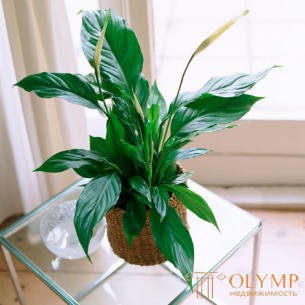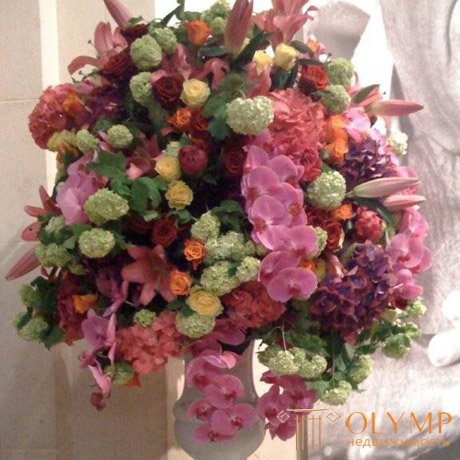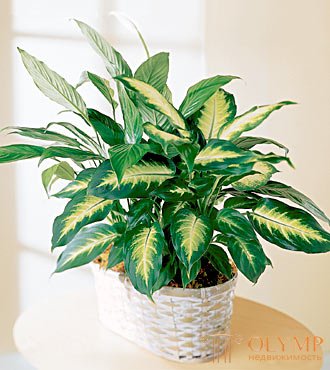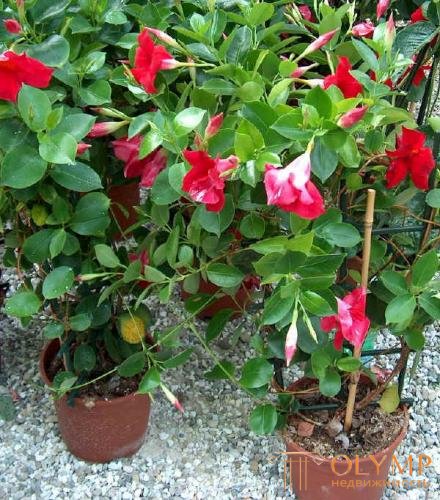
Phytodesign is drawing up flower arrangements, bouquets, decorating rooms with living plants, creating winter gardens of different flowers and trees, landscaping terraces, balconies, mini-gardens behind glass. 
The overall interior of the apartment or office will not be considered complete, even if the repair is done - if there are no plants in it. Whether it is a flower vase, or a pot with a potted plant, a successfully composed mini-composition of living, dried and artificial plants, a fountain or a mini-pond decorated with artificial and living greens - all this is an important point in the interior design and good environmental perception. . 
It has long been known that plants possess not only attractive strength, but also create a special auspicious aura around themselves. The spiritual world of man is closely connected with flowers and flowering plants. And although every nation in our time in its own way perceives the value of beauty, but the indisputable fact is the beauty of plants and flowers - the beauty of flora.
If you do not think about a serious breeding of indoor plants or about the design of your interior, then you can certainly acquire indoor flowers only by obeying the impulse, followed by placing a new “green tenant” in any free space on the table or windowsill. If the phrase "phytodesign of the interior" is not an empty sound for you - we start thinking.
The first thing we pay attention to is the color scheme of the room, the actual coloring of the wallpaper and furniture. For most plants, plain light walls are ideal. On the background of patterned wallpaper will look beautiful plants with large leaves (provided that the curves of the plants do not repeat the pattern of wallpaper). Light furniture will make a good background for ivy, forget-me-nots, tradescantia. And dark brown - for plants of a light green scale, with motley leaves, with white flowers ...
In the interior, plants are placed both on the windows and on the walls, on decorative grids, in florists, shop windows, etc. Plants have single and groups. Single-handedly - in order to attract special attention. In this case, the plant is usually large in size, of unusual shape or interesting color. Such plants are also used from a practical point of view, for example, they separate one zone of a room from another or fill a randomly formed void. For a group composition, 4–12 flower pots with plants requiring the same or almost the same conditions are chosen. The composition can be selected on the harmonic or contrasting principle. In the first case, plants similar in color and shape are used. Contrast compositions use a variety of combinations, for example, variegated flowers and plants with uniform leaf color. Group composition may not necessarily be horizontal. To create a vertical group, at least one ampelous plant or liana must be used.
Usually make out the corners of the room. In the preparation of any composition, it is necessary to remember the periods of growth, dormancy and flowering, promptly remove faded specimens, introduce new species.
Often, plants require additional artificial lighting, especially in the autumn-winter period. To solve the problem of insufficient illumination for indoor plants, you can use incandescent bulbs or gas discharge lamps. The glow of incandescent bulbs occurs as a result of heating of the filament body (most often it is a tungsten spiral). In a gas discharge lamp, optical radiation arises as a result of an electrical discharge in gases, vapors or their mixtures. Discharge lamps as compared with incandescent lamps have a higher luminous efficiency and a longer service life. The lamp for plants should be lit 10 hours a day and always in the daytime, and not at night, because the plants also need rest. The distance from the light source to the plant depends on the lamp power.
Artificial light must fall on plants similarly to natural, that is, from above, in which case plants will not have to expend energy on changing the position of the leaves in order to receive as much light as possible. If there are problems with creating artificial lighting, here is a list of some plants that tolerate a lack of light or even grow better in shaded places: plump asparagus, araucaria, green leaf gold tree, alokaziya, holly, pension, yew, laurels, myrrh, myrtle , ferns adiant, cochlea, nephrolepis, bracken, ivy, sanseviera, thuja, date palm, etc.
In the composition and placement of plants show creativity and ingenuity, but be sure to remember the sense of proportion and the conditions of detention.
Game: Perform tasks and rest cool.3 people play!
Play game
When interior design plants pay attention to the angle of incidence of light. When the flowers stand against the sunlit wall, their shadows form an entertaining and strange pattern. And if they stand against the light, on the windowsill, then the general contours stand out. A good effect is achieved if the tones of curtains, wallpaper, furniture upholstery are repeated in flowers. If the interior is built on the contrast of black and white, the rich colors of plants will give freshness to the overall picture.
Game: Perform tasks and rest cool.3 people play!
Play game
However, you need to know that for the spectacular green decoration of the room it is not necessary to oversaturate it with plants. It is important to be able to choose from the whole variety the most expressive views, harmoniously combined with the interior of the apartment. For example, halls, lobbies, lobbies, glazed galleries, long corridors and stairwells require special landscaping techniques. Here group compositions in florists will fit - single or differently arranged in groups of 2, 3, 5, depending on the size of the room. They are installed at the window openings, at the walls, between the columns. Mobile florists with liner containers made from various synthetic materials and ceramic floor flowerpots are more commonly used. You can create green corners composed of several sectional containers, often of different height and shape.
Что бы оставить комментарий войдите
Комментарии (0)